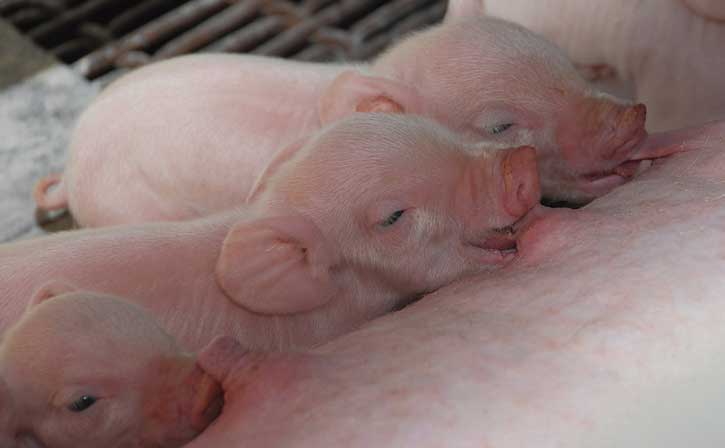President-Elect’s Message: The miracle of life (March 2018)
As swine veterinarians, we are called upon to reduce disease impact and improve the health, well-being, and performance of the pigs in our care. Because the world is not perfect we sometimes have to deal with situations or outcomes that are less than desired. A few times I’ve felt overwhelmed with the responsibilities we have. It’s been helpful for me to draw on my experiences and relationships with family, AASV colleagues, and clients to help work through these difficult situations.
On our home farm, one of my responsibilities in high school was to check the sows in the farrowing house in the evenings. It was a very rewarding experience for me. Night-time at the farm was usually a very quiet time. I would top off feeders in the rooms with sows and older litters. When looking at the sow cards, I was amazed to realize that 90% of the sows had the same previous farrowing date and many had the same farrowing date before that! It was intriguing to me that the sows in this room spent most of their time in close proximity to the same sows. My dad later helped me to understand the impact of maximizing lactation feed intake on wean to service interval and subsequent litter size. He also helped me to understand the consequence of over-feeding when I had to scoop out feeders with wet, spoiled feed after I got carried away. I learned early on that more is not always better.
In the rooms with peri-parturient sows, I would usually leave the lights off so as not to disturb the sows. The amber glow of the suspended heat lamps over the creep areas provided adequate lighting to evaluate each farrowing stall. Most times the sows were fine. It was not unusual to only need to remove afterbirth from farrowing stalls where sows had finished the farrowing process. Occasionally, there would be one or two sows that needed assistance. Sometimes it would just be a breech pig that needed help passing through the birth canal. Other times it could be a combination of a heavier conditioned sow and large birthweight piglets or an older parity sow experiencing uterine inertia and had stopped contracting.

From my perspective, there are not many things more rewarding than helping a newborn animal into the world. The transition from fetus in the uterus to newborn vigorously nursing colostrum within a few minutes is remarkable. While many sows fare just fine without human assistance, there is no doubt that others benefit from proper oversight and intervention when needed. As swine veterinarians, we have the opportunity to experience this miracle every day. It’s easy to take it for granted. Not everyone has this opportunity. Some experience it when their pets give birth, others when they have children. Take some time the next time you are watching a sow farrow to truly reflect on your calling and purpose as a swine veterinarian. I guarantee it will reinvigorate you!
C. Scanlon Daniels, DVM
AASV President-elect